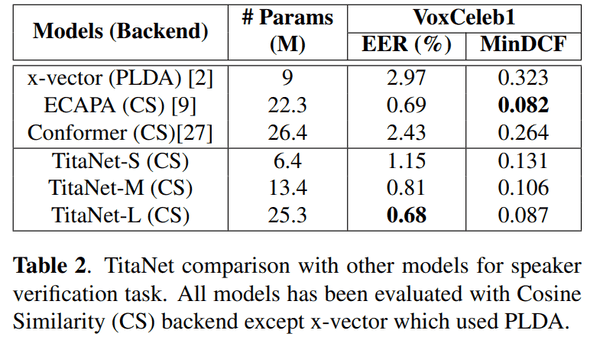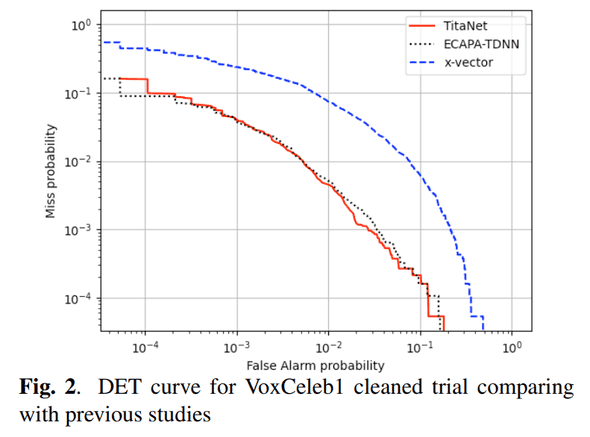TL;DR
Related Work
Architecture
ContextNet architecture와 비슷한데, decoder 부분만 보면 attentive pooling에 2번의 projections 후 AAM (Additive Angular Margin) 한다.
Encoder
차이점은 거의 없지만 특징만 써 보면 다음과 같습니다.
- 1d time-channel depth-wise separable convolution 사용
- 1d depth-wise conv + point-wise conv
- residual connection 전 SE (Squeeze & Excitation) 함
Decoder & Embeddings
decoder 도 이전 연구들에 비해 특별한 점이 없다.
- attentive statistics pooling 함
Recipes
recipe 에도 큰 특별한 점은 없다.
- 전처리로 SAD는 하지 않았다.
- 3 secs 이상의 audio는 1.5, 2, 3 secs의 chunk로 나눴다.
- frame window : 25 ms, hop window : 10 ms, mel features : 80, num FFT : 512
- frequency-axis로 normalize 함
- augmentation 함
- RIR impulse corpora
- speed perturbation
- spec augment
Performance
EER on VoxCeleb1
이전 연구 (ECAPA) 랑 거의 comparable 한 성능을 보인다.
DET Cruve
이전 연구와 거의 비슷한 성능을 보여준다.
Conclusion
이전 연구랑 큰 성능 차이도 나지 않고 architecture design 도 대부분 이전 연구들과 차이점이 없어서 연구 자체가 재미있진 않았지만, 요즘 speaker verification 모델 성능이 이 정도 나오는구나 하고 넘어갔다.
첫 회사 첫 프로젝트로 speaker diarization 모델을 만들었는데, 아쉬움이 많이 남은 프로젝트라서 아직도 애착이 가는 분야이자 프로젝트다. 그래서 아직도 speech domain 다루는 회사 (synthesis 도 좋지만 diarization 쪽)를 다녀보고 싶습니다 ㅋㅋㅋㅋ
결론 : 굳


